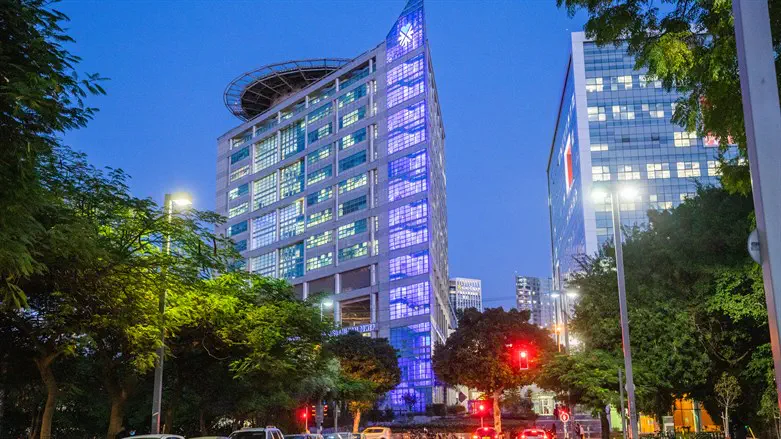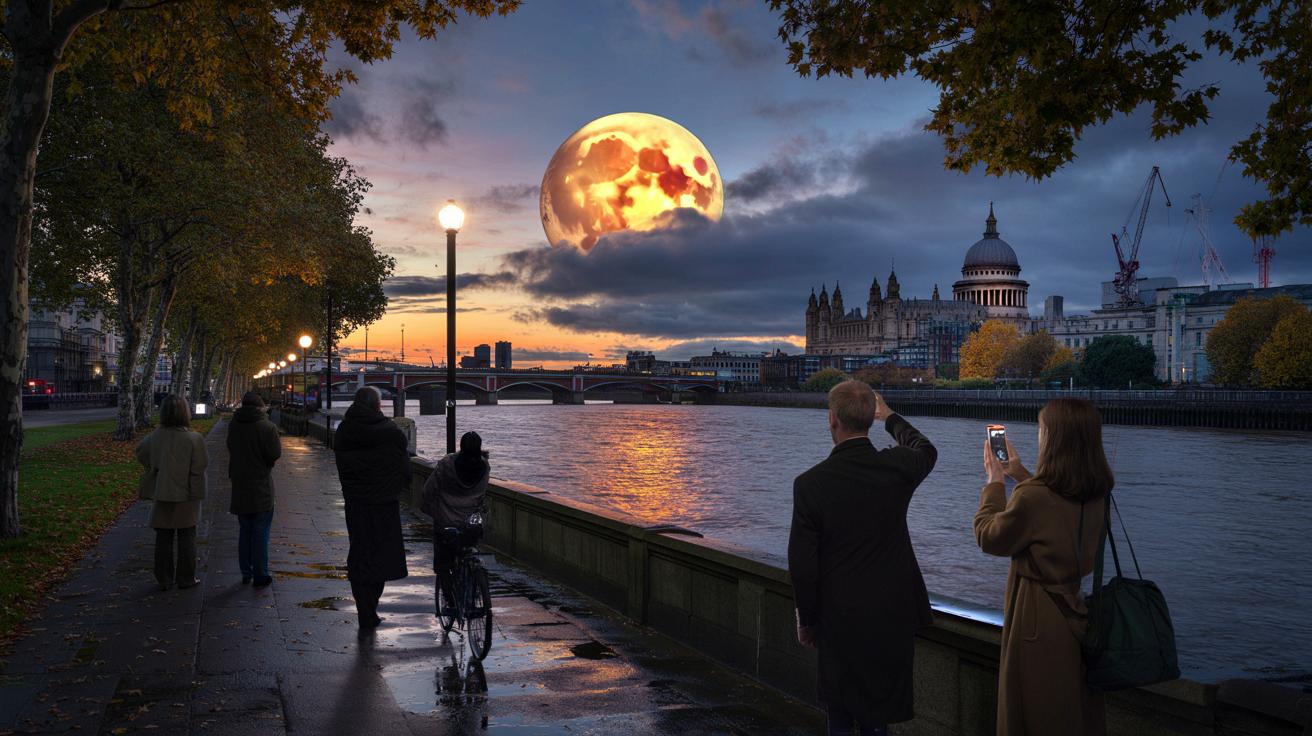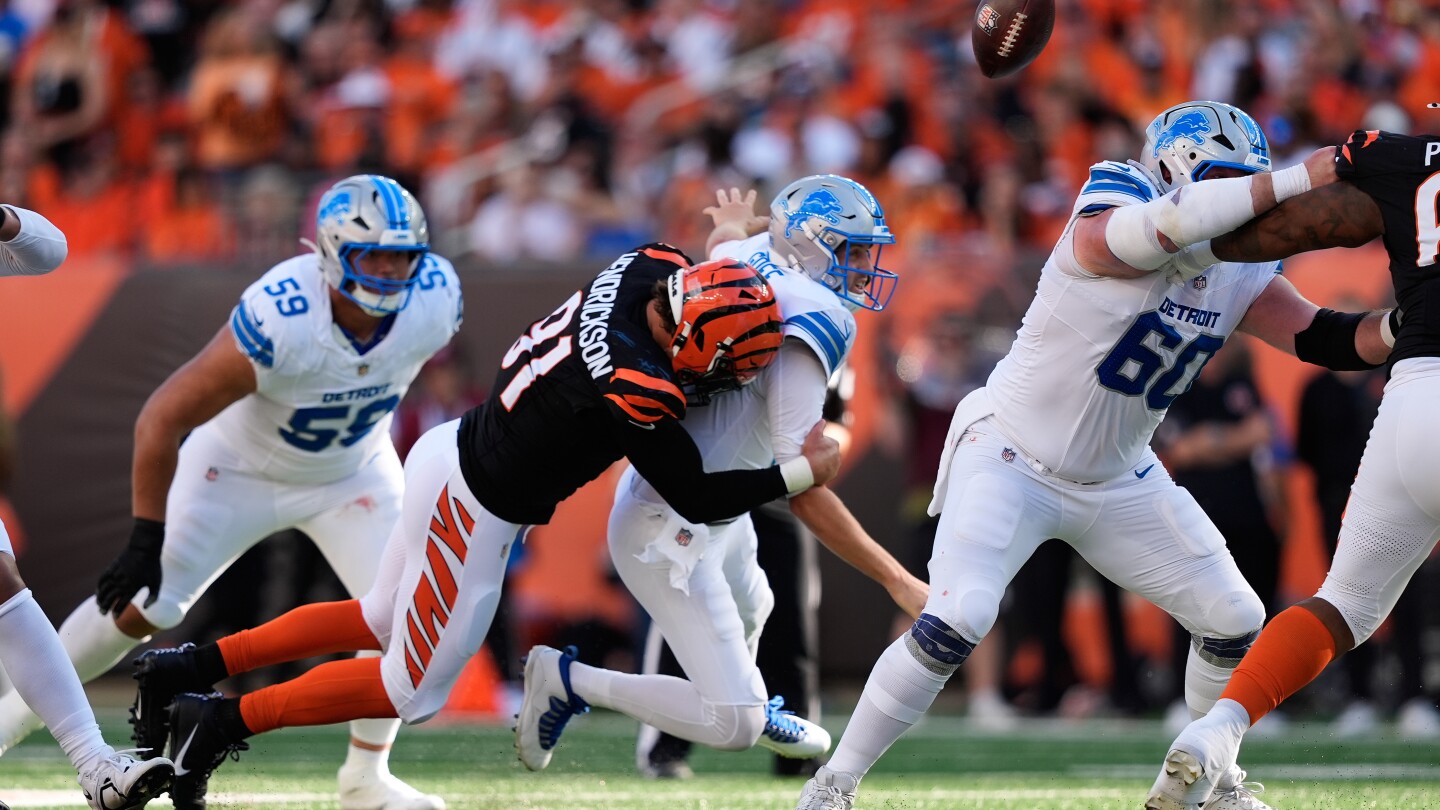Clearer evenings arrive after Storm Amy, and the night sky has a surprise lined up that could light your commute home.
Britain is about to get its first supermoon of 2025, and it lands on a Tuesday night when many of us are still outdoors. The harvest moon will lift above the horizon around 18:20 BST across the UK, offering a warm, low glow and a sense of scale that catches the eye.
When and where to look
The full moon rises close to sunset and looks largest to the eye near the horizon. The UK will see it around 18:20 BST, give or take several minutes depending on location and skyline. You get a longer viewing window because the moon stays bright and high through the evening.
The first of three supermoons in 2025 rises on Tuesday 7 October at about 18:20 BST across the UK.
Approximate moonrise by city
Local horizons and tall buildings can delay your first sight by a few minutes. These times are indicative.
| City | Moonrise (BST) |
|---|---|
| London | 18:20 |
| Birmingham | 18:23 |
| Manchester | 18:27 |
| Cardiff | 18:22 |
| Belfast | 18:31 |
| Edinburgh | 18:28 |
| Glasgow | 18:29 |
What the weather is doing
Conditions settle after Storm Amy, but cloud still matters. A cold front brings damp air to Northern Ireland and Scotland in the daytime, then clears around evening, opening a window for sightings. As that front sinks south, it threatens the view in northern England, the Midlands and Wales, with thicker cloud bands at times. Farther south, cloud breaks come and go, giving short clear spells and decent chances between banks of grey.
Best prospects: northern and southern England with breaks; watch for evening clearance in Scotland and Northern Ireland.
Why this is called a supermoon
The moon travels on an oval path around Earth. Sometimes it draws closer, a point called perigee. When a full moon lands near that closest approach, it looks a shade larger and brighter than average. Astronomers do not all use the same cut-off. One common rule says a full moon within 90% of perigee earns the “super” label. By that yardstick, Tuesday’s moon qualifies. Another, stricter rule uses 360,000 km from Earth’s centre, which would exclude this one.
For your eyes, the change remains modest but real. Compared with a run-of-the-mill full moon, a supermoon can look up to 14% wider and about 30% brighter. The difference is most striking when you set it against buildings, trees or hills at low altitude.
Why this one is the harvest moon
Each full moon carries an old name tied to seasonal work and wildlife. The harvest moon is the full moon nearest the autumn equinox, which fell on 22 September this year. That timing gives farmers extra twilight the week it arrives, because the moon rises near sunset for several evenings in a row. In many years the harvest moon sits in September. This time it falls on 7 October, the latest since 1987. October’s full moon is also widely known as the hunter’s moon, a name that lingers in folklore.
The harvest moon arrives latest since 1987, bringing several evenings of near-sunset moonrise for extended light.
The horizon trick that makes it look huge
Many people swear the moon swells at the horizon and shrinks as it climbs. Your brain makes that call, not the physics. When the low moon sits beside rooftops or treelines, your visual system judges scale against nearby objects and exaggerates size. The disc itself does not change size through the night. The colour does shift. Near the horizon, the moonlight crosses a thicker slab of atmosphere. Air scatters more blue light away and lets the red and orange tones pass through, so the disc looks warmer and deeper in colour.
How to get your best view or photo
You can plan a short, simple outing and still bring home a striking image.
- Pick a viewpoint with a clear eastern horizon and a foreground object: a spire, a pier, a crane or a line of trees.
- Arrive 20 minutes early to judge the cloud gaps and set your framing while light fades.
- Use a tripod or brace your phone on a wall to cut blur. Trigger the shot with a timer.
- Switch off flash. On phones, reduce exposure to keep lunar detail and avoid a washed-out disc.
- Try a short telephoto (70–200mm equivalent) for a large disc, or a wider lens to tell the story with context.
- If cloud moves in, wait five minutes. Small breaks often open near sunset as temperatures drop.
What it does to tides and wildlife
A full moon brings spring tides, and a supermoon nudges them a touch higher. Coastal areas may see slightly larger tidal ranges over the next couple of days. Onshore winds and low pressure matter far more for coastal flooding risk than the small supermoon boost. Anglers and birders often report livelier behaviour on bright moonlit nights. No two species respond the same way, so local knowledge helps if you plan a dawn watch.
Can you see it if it is cloudy?
Yes, if you catch a break. Even a narrow gap will show the rising disc. The moon climbs quickly, so new sightlines open as it clears nearby roofs and trees. If the weather fails you, you get two more chances this year.
More supermoons follow on 5 November and 4 December, giving Britain three in a row before year’s end.
Key facts at a glance
- Date: Tuesday 7 October 2025.
- UK moonrise: around 18:20 BST, varying by a few minutes by region and horizon.
- Brightness/size: up to 30% brighter and 14% wider than a typical full moon.
- Name: harvest moon, also known as October’s hunter’s moon in tradition.
- Next events: 5 November and 4 December supermoons.
Make the most of the harvest light
If you want that classic big-moon look, frame it low. Position a friend on a hill or a monument at distance and use a longer lens to compress the scene. The person feels huge against the disc, and you keep that sense of theatre without digital tricks. For families, a short evening stroll to the nearest viewpoint works well because the moon rises at a convenient hour.
A note on definitions and expectations
The word “supermoon” is popular, but it covers a range. Some months sit closer to Earth than others, and not every “super” night will look dramatically different to casual eyes. Expect a bright, steady disc, a warm tint near the horizon, and a strong presence beside skyline landmarks. That is enough to turn an ordinary Tuesday into a shared moment that cuts through the evening rush.
First Appeared on
Source link













